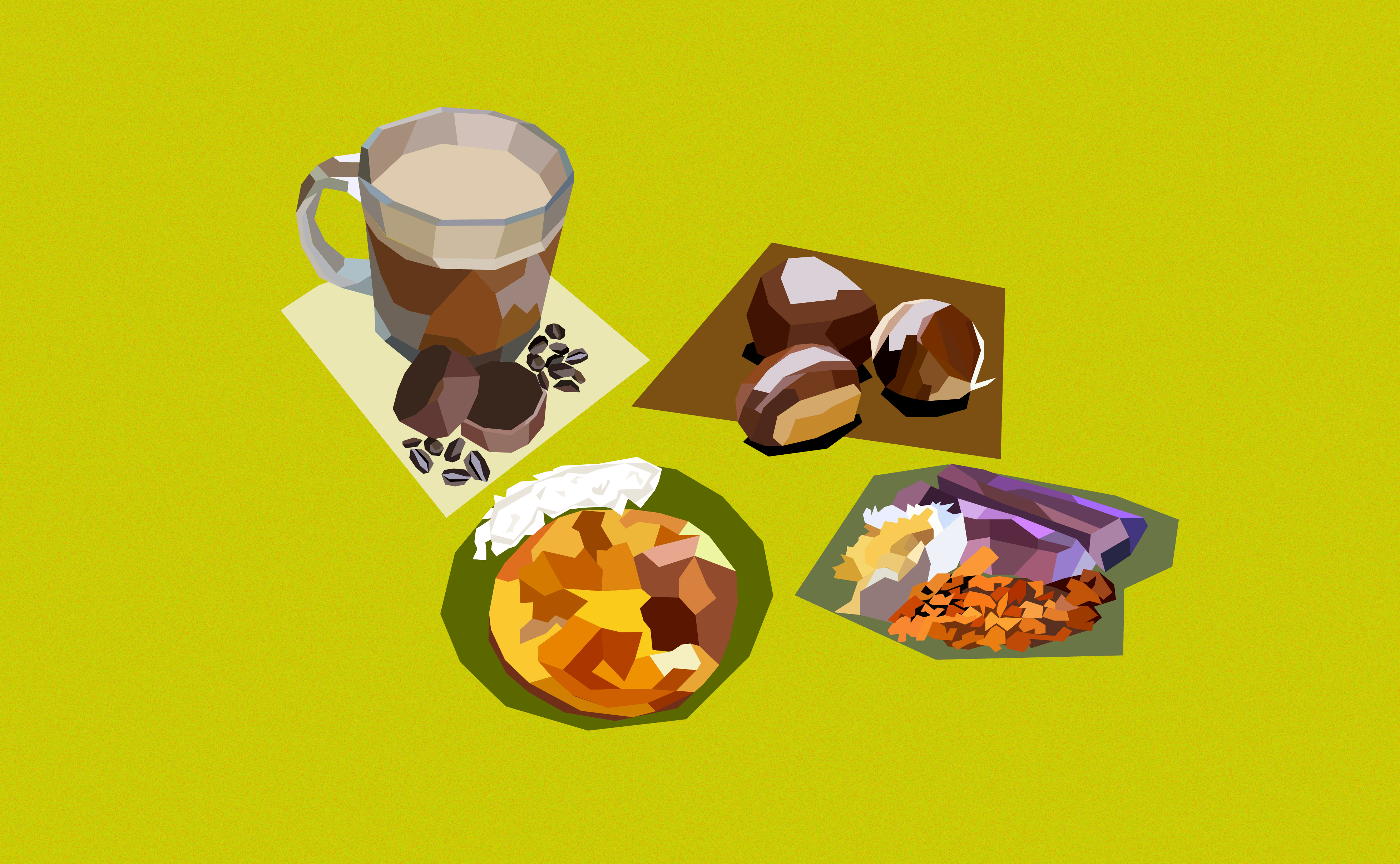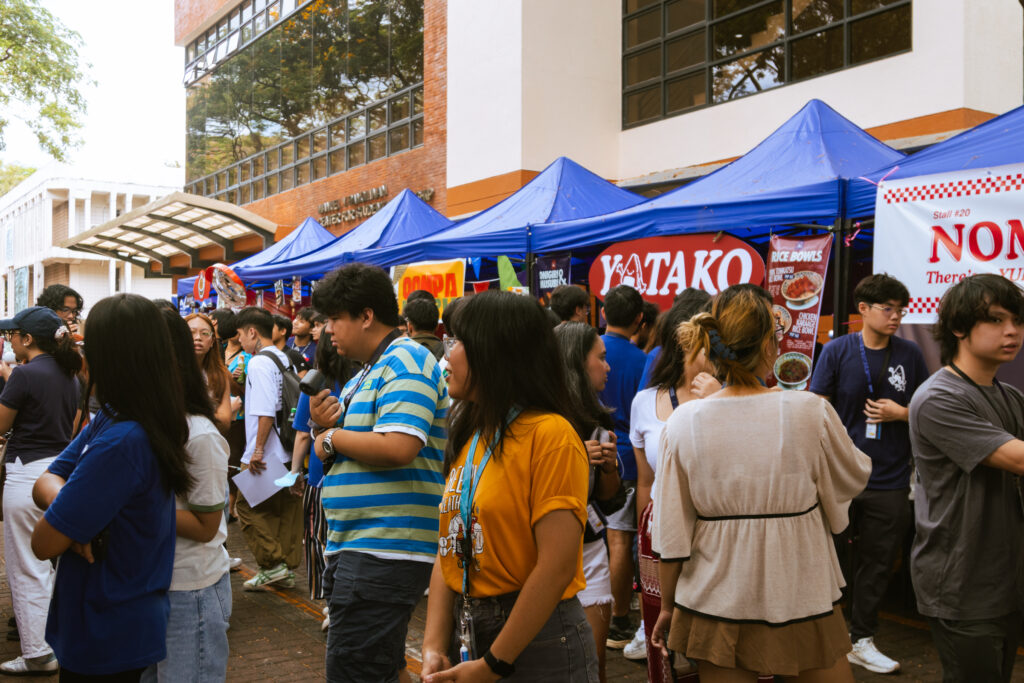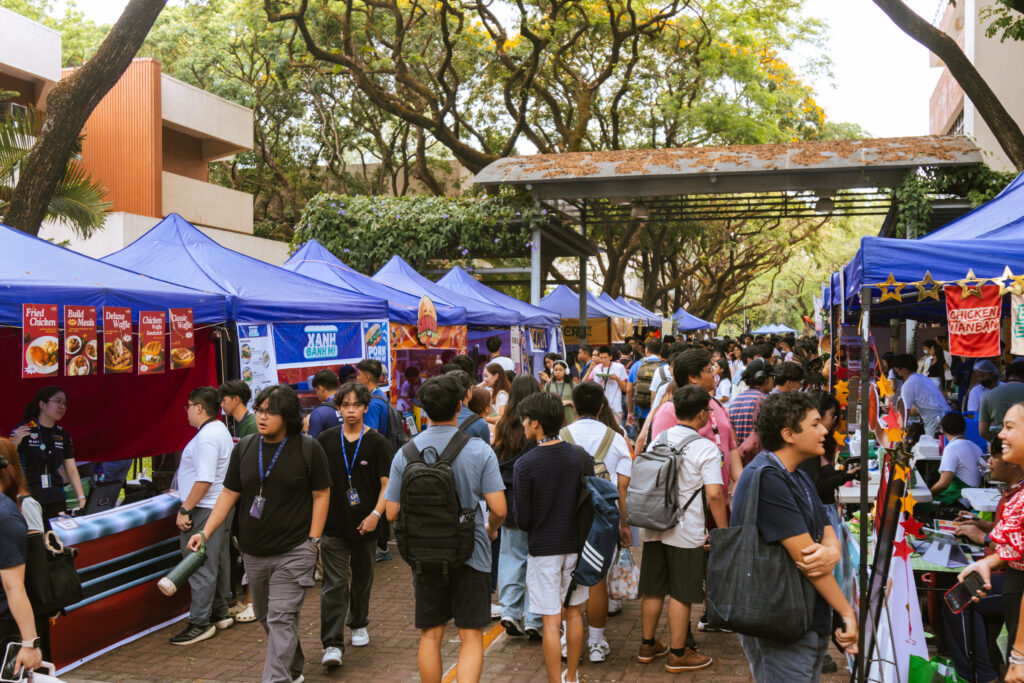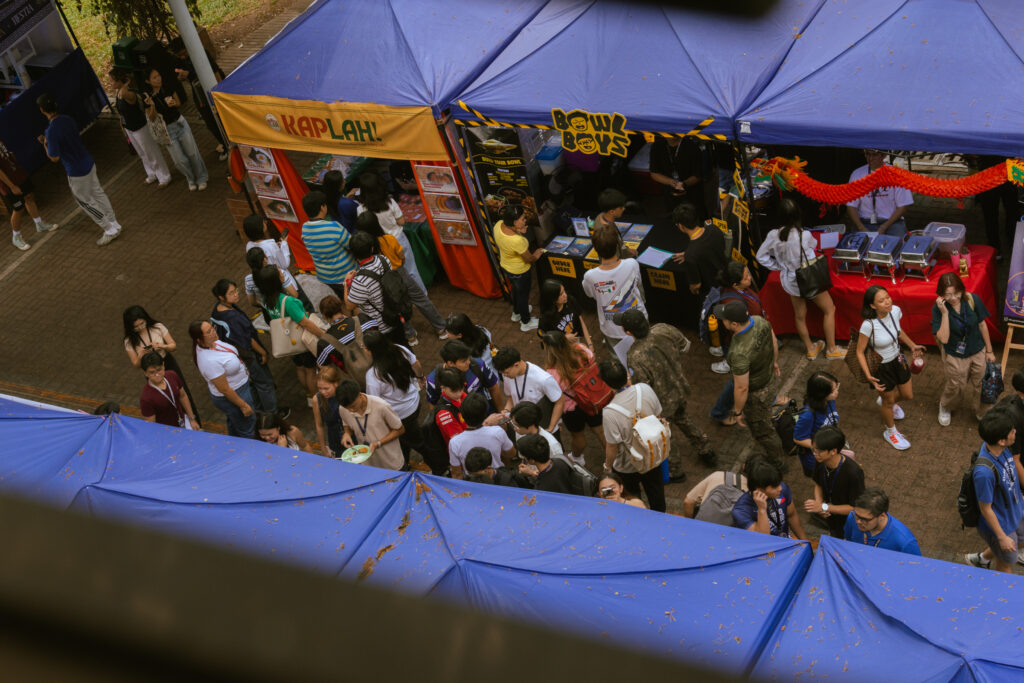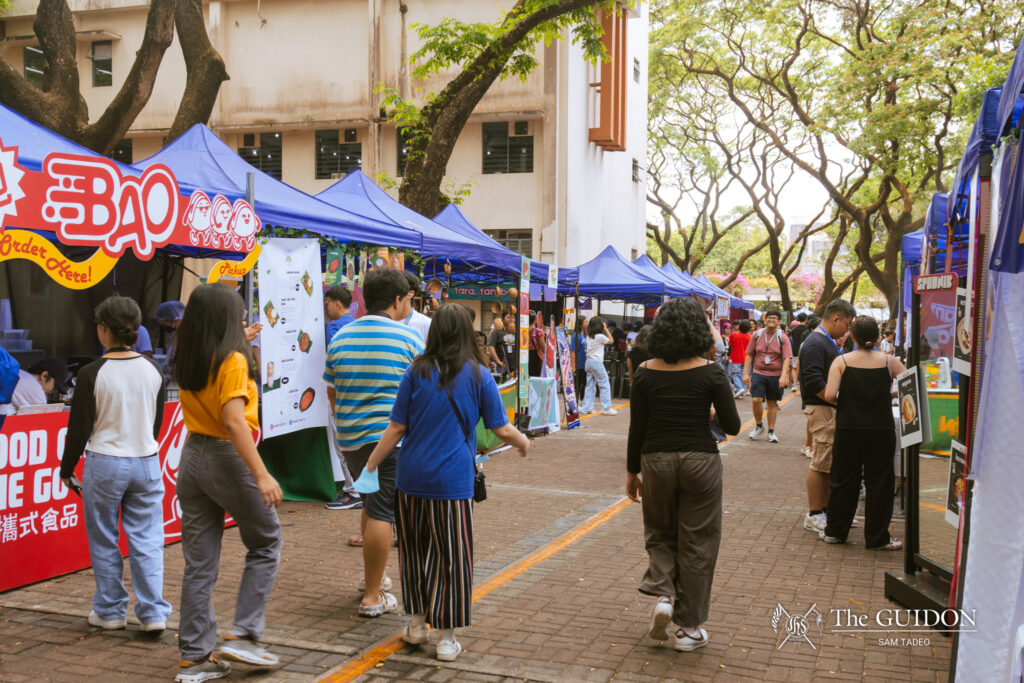Illustrations by Paulina L. Almira
The nights are longer, the winds have picked up and the air has found a cool freshness. It means nights with blankets shrouding our bodies and actually being able to wear jackets during the day. Christmas is quickly approaching and for many, this means presents, family, fireworks and of course, food.
Christmas might be synonymous to lights and decorated trees in other places in the world, but what really heralds the season in the Philippines isn’t ornaments and fat men in red climbing down chimneys (Who even has a chimney south of Baguio?). It’s the small stall that magically appears overnight with the peculiar cylindrical steamers and coal heated terra cotta ovens. It’s the ringing bells at 5:30 in the morning and the sound of rolling chestnuts on a wok. It’s that overwhelming scent of melting margarine and steaming hot chocolate. You really know it’s Christmas when suddenly, the church becomes a very festive food court. The season is, among many things, a season of eating. Here, we run down a couple cultural favorites to look forward to:
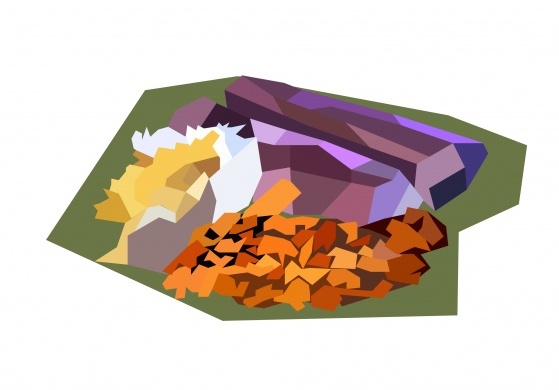
Puto bumbong
The bright purple treat that is pounded out of a bamboo shoot, covered in flecks of brown and white can only be described as magical—but the science behind it is actually quite simple. The process starts with the rice, more specifically the black heirloom grains known as pirurutong. The grain is soaked, ground, dried and then mixed with water and sugar to form the galapong or rice batter. The mixture is then stuffed into the tubes of the specialized steamer (traditionally a short bamboo shoot jutting out of a pot of boiling water). Once the steam starts to escape the tubes, the cakes are done. The puto bumbong is then pounded out of the mold and served with freshly grated coconut and muscovado sugar.
Sadly, only a handful of establishments use the original recipe, being that the pirurutong is now scarce and very expensive, the street vendors substitute a mixture of malagkit (sticky rice) and purple yam. Chances are many haven’t come across the original puto bumbong, so keep an eye out for the color. Puto made with pirurutong has a deep purple hue, unlike the purple yam substitute, which yields a lighter, pastel colored cake.
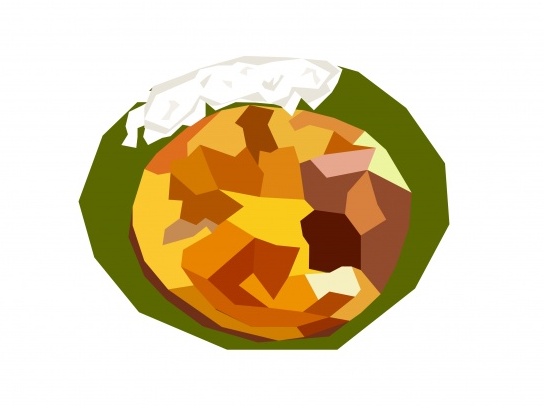
Bibingka
The bibingka traces its roots to China, where its name is derived from the Hokkien root word “bi” which means uncooked rice. This frequent accompaniment to puto bumbong is a spoonful of varying flavors and textures. The baked rice cake is usually served piping hot with goat cheese, salted duck eggs, margarine and a generous sprinkling of freshly grated coconut.
To make the cake, rice flour, coconut milk and water are mixed to form the galapong (rice batter). Traditionally baked on a special terra cotta oven heated with coals, a banana leaf is laid on the hot coals and the batter is poured on the leaf, one more banana leaf is laid on top of the batter then covered by another heaping of hot coals. The end result is a soft sponge that is charred on both sides, which gives it a subtle smoked flavor, and infused with the aroma of the banana leaves. Many variations of the bibingka can be found throughout the country, from the cassava bibingka and the bibingkang Mandaue, made with tuba (palm liquor).
The bibingka has become a year-long treat, but still best eaten after simbang gabi, with the slow ascent of the sun as your backdrop and childhood nostalgia your accompaniment.
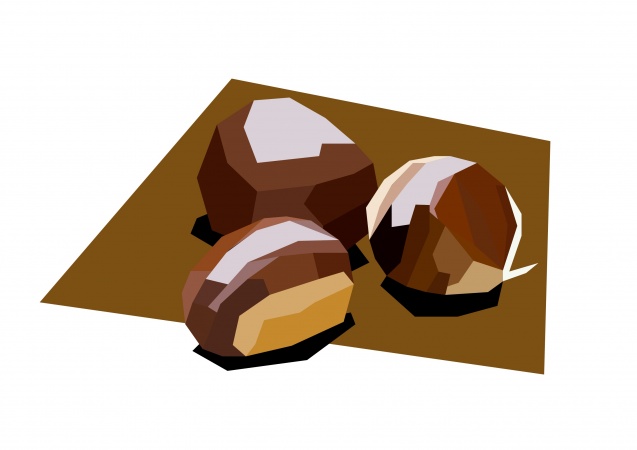
Castañas
Castañas is Spanish for chestnuts yet, unsurprisingly, the actual chestnuts we use aren’t from our colonizers of 300 years: They’re from China. Usually seen along the streets in enormous woks, the castañas are often layered with little black rocks. These are actually volcanic rocks and are used for slow and even cooking. So forget chestnuts roasting on an open fire—we have chestnuts roasting on lava stones! The castañas are roasted in the wok and tossed occasionally to distribute the heat evenly throughout all the chestnuts. They are best served hot and in a small brown paper bag, the supple sweetness of these nuts are incredibly addicting.
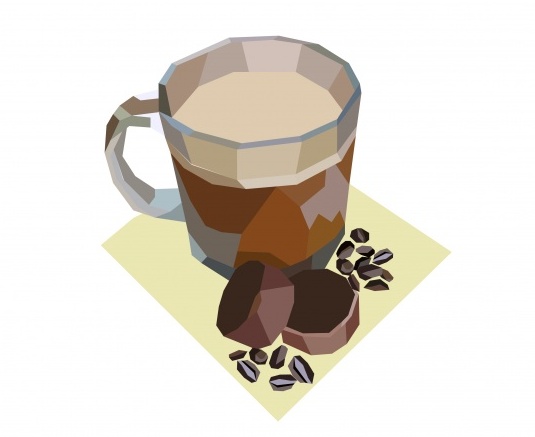
Tsokolate
One cannot experience Christmas without hot chocolate—the idea is just inconceivable. Tsokolate is hot chocolate made from chocolate tablea, thick discs of ground roasted cocoa beans and sugar. The drink came from the Spanish and their obsession with chocolate for breakfast, making landfall on our shores around the same time as the Catholic Church. The process of making this decadent delight is quite simple: The tablea is mixed with hot milk and water, then a batidor—a wooden stick beater reminiscent of a honey dipper but with indents segmenting the ridges—is rubbed vigorously between the palms of the hand to foam the chocolate. The tsokolate is usually served with bibingka or ensaymada, as both a drink and a dipping sauce.
Updated: Dec. 23, 2014, 11:39 PM


